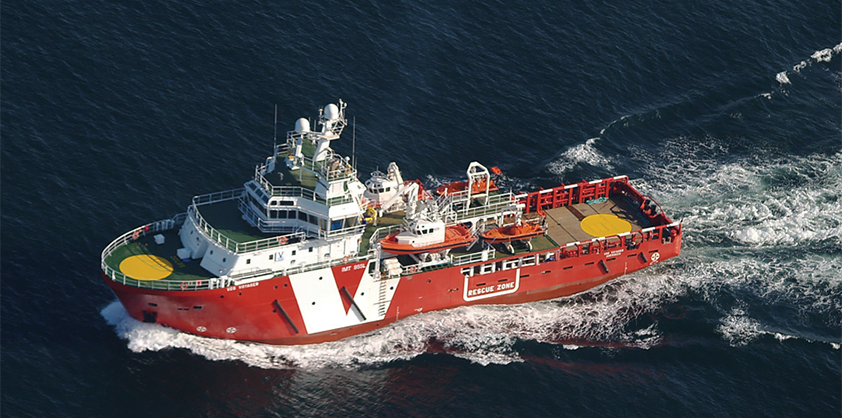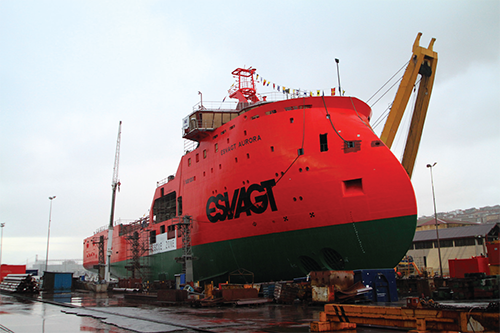
Zamakona Shipyards
Something special
Zamakona is one of Spain’s main shipyard groups with a presence in three prime locations; Bilbao and Pasajes in the Northern Peninsula, and Las Palmas in the Canary Islands.
The shipyard in Bilbao has been operational since 1914, but did not become part of the Group until 1980. The first seeds for Zamakona as it stands today were sown in 1972 with the creation of Napesca in Las Palmas, which remains part of the Group. After having incorporated Astilleros Zamakona in Bilbao into the group, further acquisitions consisted of ship repair yard Repnaval in 1988, and Astilleros de Pasajes in 2006. Today the Group is 100 per cent privately owned, full capitalised, and still family managed.
The core business of Zamakona lies in new builds of high specification vessels, primarily for use in the offshore North Atlantic market. This includes standby rescue vessels, emergency response and rescue vessels (ERRV), and tugs. Further to these vessels, the tender activity also includes dive support vessels, well stimulation vessels, offshore wind farm vessels, seismic and research vessels, and anchor handling tug supply vessels (AHTS) of up to 120-metres length. For these types of vessels, many of Zamakona’s customers are based in the Scandinavian region, such as Norway and Denmark including Maersk, Svitzer, and Esvagt. Besides the offshore sector, Zamakona also delivers into other markets including fishing vessels, live fish carriers and ferries. The Group’s second business line is in repairs and conversions, which can be carried out either in dock, slipways or afloat. An additional market for REPNAVAL is the refit of large offshore platforms due to the proximity of the Brazilian and West African coast.
“We offer 100 per cent customer orientated, high specification vessels at a competitive price and to a high level of quality,” describes Michael Welti, sales engineer and marketing manager. “As part of this we are very flexible regarding changes, even during the project itself. Furthermore, we adapt continuously to the changes in regulations and procedures, as well as technological evolutions. Compared to many of our competitors, Zamakona has kept a classic line by maintaining control over many key services and products. This is particularly applicable to steel work, as all of the hulls for example are built in-house at the yards.”
 Initially Zamakona was very strongly positioned in the fishing market, but following market evolutions the company also began work on tugs and ultimately offshore vessels. As a result, Zamakona is presently one of the leaders when it comes to more complex or specialist offshore vessels. “We have specialised in this market because simple vessels can easily be built anywhere in the world and quite cheaply, whereas complex vessels are much more difficult due to the technology and timeframes involved. In addition, the offshore market remains a growing sector, obviously with some fluctuations, but there is always demand for these types of vessel,” notes Michael.
Initially Zamakona was very strongly positioned in the fishing market, but following market evolutions the company also began work on tugs and ultimately offshore vessels. As a result, Zamakona is presently one of the leaders when it comes to more complex or specialist offshore vessels. “We have specialised in this market because simple vessels can easily be built anywhere in the world and quite cheaply, whereas complex vessels are much more difficult due to the technology and timeframes involved. In addition, the offshore market remains a growing sector, obviously with some fluctuations, but there is always demand for these types of vessel,” notes Michael.
An example of this capability is the recently delivered Esvagt Aurora for Esvagt AS. This standby rescue vessel is 87-metres long and 17-metres wide, with the key visible feature being the X-bow from Ulstein Design. “Excluding the two FiFi 2 monitors, the rest of the technical capacity and concept of the vessel is not immediately visible,” describes Michael. “However, the Esvagt Aurora contains a lot of high specification equipment including an aft ramp with fast rescue boat (FRB) complete with a quick release and recovery device, an ROV installed on the port side which can also be operated in harsh conditions, towage capacity, a harpoon to fix a towing line, oil skimmer, azimuth propulsion, and azimuth and retractable thrusters in the bow, plus two tunnel thrusters.
“As a diesel-electric propelled vessel, the Esvagt Aurora has significant power generation capacities to cover redundancy, and any power load required the way the diesel engines are running at optimum MCR. This offers fuel savings, but also reductions in mechanical maintenance as the engines are running at their optimum level. The vessel has an extensive and stringent DnV Class notation beginning with standby and rescue, but also including ICE class, DP2, DEICE, Clean Design, and NOFO 2009. As such the Esvagt Aurora is fully winterised for use in Arctic areas,” he continues.
Zamakona has also contracted an additional four vessels throughout the year, including a 77-metre live fish carrier with Rolls-Royce design, which is able to work in close circuit, for a Norwegian owner. The other projects consist of a 90-metre tuna vessel for a local owner in Spain, and two standby rescue vessels of 67-metres length and Havyard design for another Norwegian client.
Longer-term, Zamakona is intending to remain close to its niche of high specification vessels with the creation of new solutions. One area where this may be of interest is the renewables sector where many specialised vessels are targeted. “We would like to remain a key player in the offshore market for higher end vessels, but also open up into new areas like research vessels or offshore wind vessels to offer solutions that fulfil these specialised and highly technical, needs,” concludes Michael.
Zamakona Shipyards
Services: High-tech shipbuilding and repairs